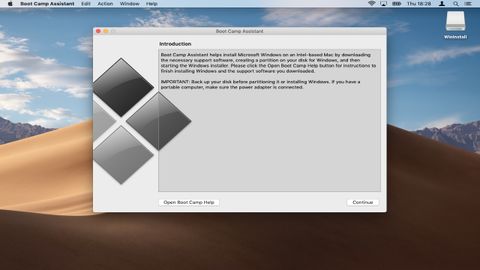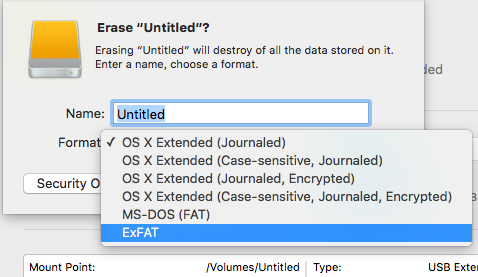
- #Make nts format for file back from windows and mac mac osx
- #Make nts format for file back from windows and mac windows
So if you want to format your 5 TB external hard drive as a single volume with FAT32, you wouldn’t be able to do it.įiles stored on FAT32 file systems also have a much higher chance of being corrupted as opposed to NTFS. FAT32 can only work with files up to 4G in size and volumes up to 2TB in size. In terms of security, you can also encrypt files using the built-in encryption in Windows.Īnother major benefit of switching to NTFS is that you are no longer restricted to storing files less than 4GB in size on the device.
#Make nts format for file back from windows and mac windows
For example, an NTFS file system lets you add Allow and Deny permissions to individual files and folders for specific Windows users, something you cannot do in the FAT file system. The drive should now be accessible in Finder.įor products related to this article, click here.The advantages of enabling NTFS on removable storage devices are fairly enticing. Select the new drive and click the Partition tab.Ĭlick Options and verify that it is set to GUID Partition Table. Navigate to Applications and click Utilities. To create a partition on a new drive, complete the following: Note: The following steps create an HFS+ (Mac OS Extended (Journaled)) partition that uses the entire drive space. If you are not prompted to initialize the drive and you cannot find the drive in Finder, you will need to create a partition on the drive. If you are prompted to initialize the drive, click Initialize.
#Make nts format for file back from windows and mac mac osx
Mac OSX detects a drive that needs to be initialized and automatically prompts you to initialize the drive. The partition uses a file system (for example, HFS+, ex-FAT, NTFS, and so on). A partition defines an area of the drive to use for storing data. Mac OSīefore you can access a new or formatted drive in your operating system, you need to initialize it first and then create a partition on the drive. The new drive should appear in Windows Explorer.


If you are running Windows ® 7 or later and are using a drive larger than 2TB, initialize the disk(s) with GPT.

When prompted to, initialize your disk(s). Press the Windows key + R, type compmgmt.msc, and click Run to open Computer Management. If you cannot find an uninitialized drive in Disk Management, skip the following steps and try to partition your device. Note: You typically only need to initialize a drive if the drive is new.

The partition uses a file system (for example, ex-FAT, NTFS, and so on). Before you can access a new or formatted drive in your operating system, you need to initialize it first and then create a partition on the drive.


 0 kommentar(er)
0 kommentar(er)
